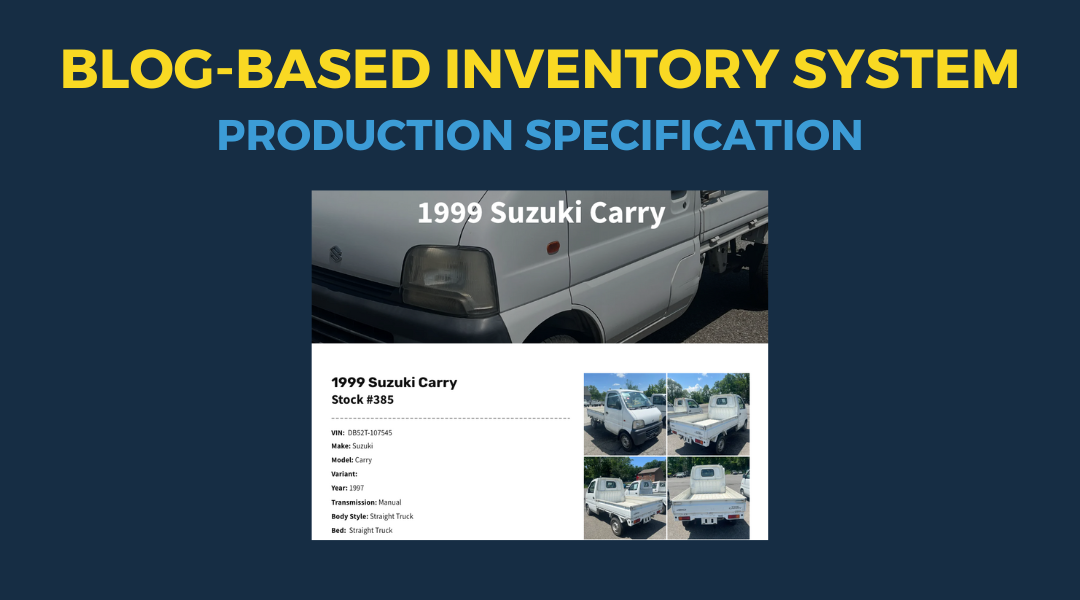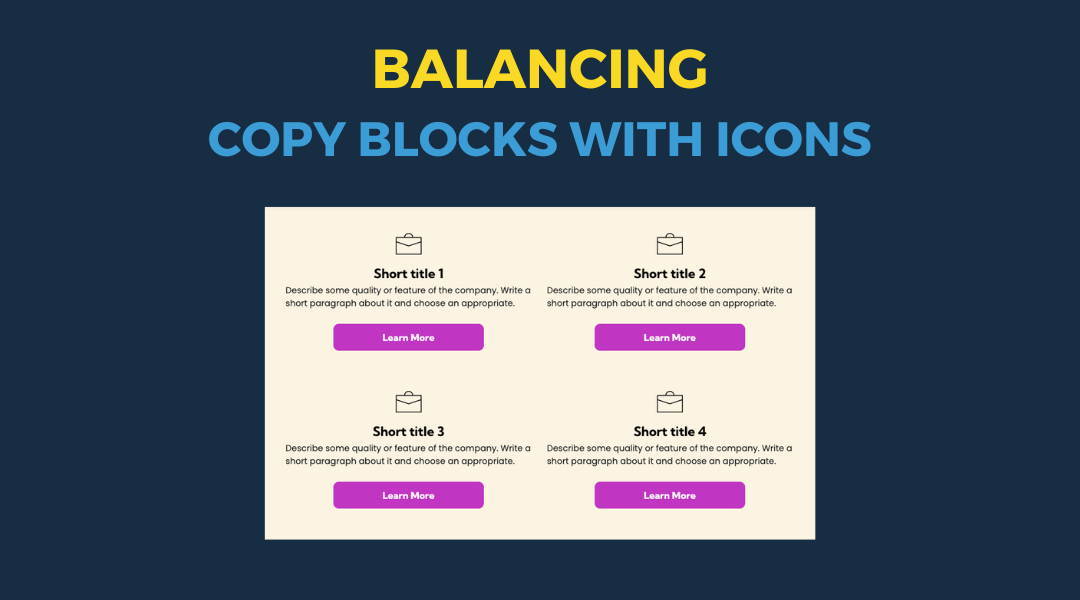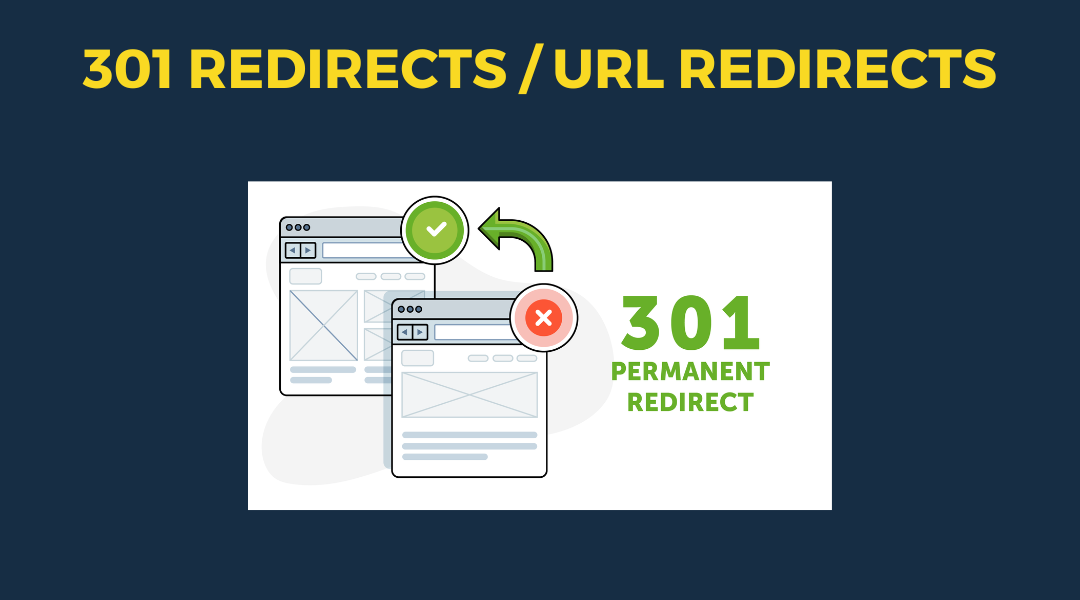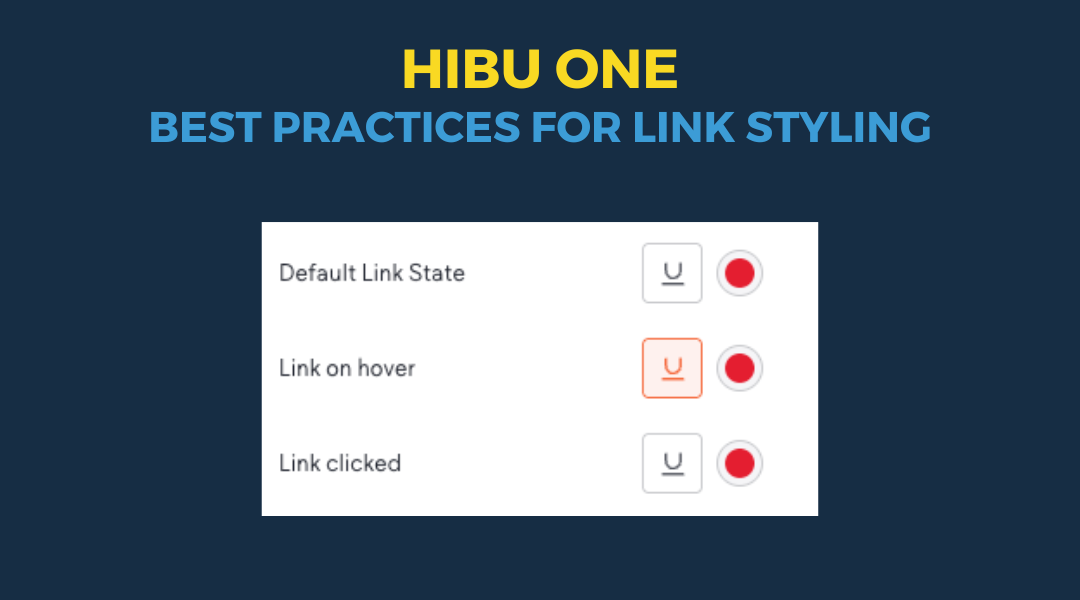Headlines - Breaking for Sense
April 29, 2024
Elements to Bold for Enhanced Web Design
Headlines that are two or three lines deep can create a tricky problem -- line breaks, or the place where one line ends and another begins. Avoid bad breaks caused by dangling verbs, adjectives or propositions. Review all heads and subheads and to make manual line "breaks for sense." Breaking for sense means breaking a line where one might logically pause when reading it aloud.
When breaking for sense, strive to:
- Keep important phrases together
- Avoid hyphenations
- Break a line after punctuation
- Pair adjectives with their nouns
- Keep proper names together
- Group color and typestyles together
Examples
NO
Looking for a New Car? We
Can Help.
YES
Looking for a New Car?
We Can Help.
NO
Making Life Better One
Home At a Time
YES
Making Life Better
One Home At a Time

This setup provides clients with a lightweight, SEO-optimized, scalable way to showcase inventory using the blog feature. It requires design discipline, metadata precision, and clear client education to function effectively. Restores client-side flexibility after the removal of manual page creation capabilities


